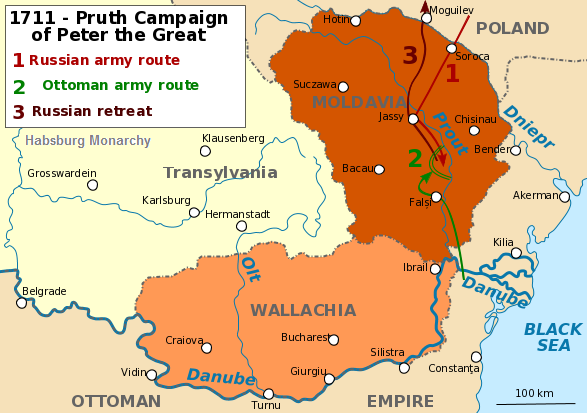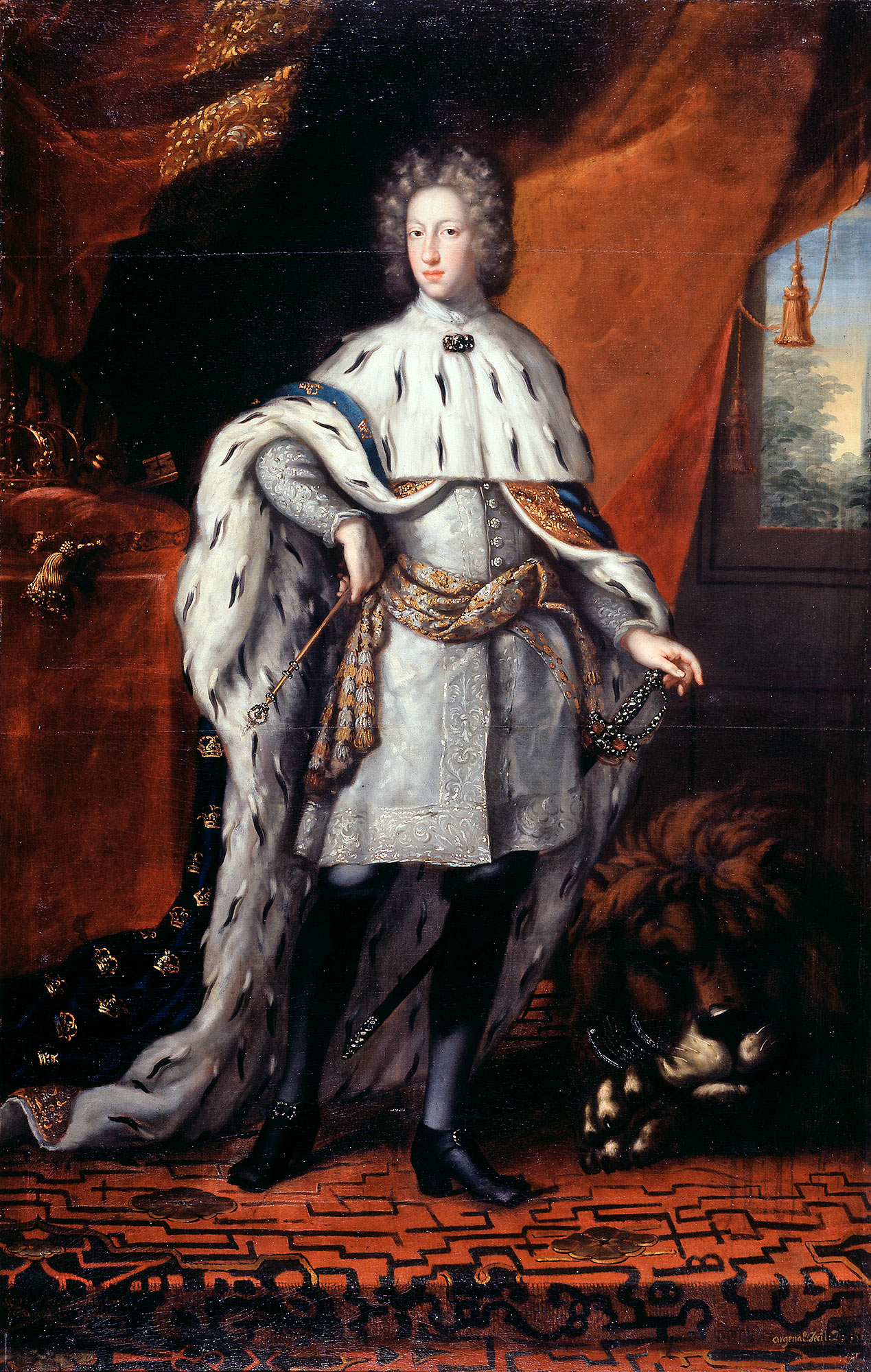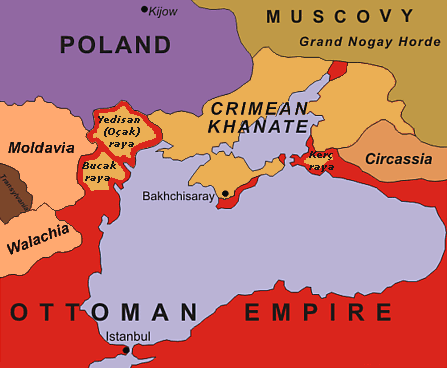|
Treaty Of Adrianople (1713)
The Treaty of Adrianople, also called the Treaty of Edirne, was signed on 24 June 1713 between the Ottoman Empire and the Tsardom of Russia and confirmed the Treaty of the Pruth of 1711, which had ended the Pruth River Campaign (1710–1711).''Treaty of Adrianople (1713)'', ''Conflict and Conquest in the Islamic World: A Historical Encyclopedia'', Vol. I, ed. Alexander Mikaberidze, (ABC-CLIO, 2011), 33. The Treaty of Pruth, signed by Baltacı Mehmet Pasha, was at first received well in Constantinople, but the dissatisfied pro-war party, supported by King Charles XII of Sweden, who had taken refuge in the Ottoman Empire since 1709, turned public opinion against Baltacı Mehmet Pasha, who was finally relieved from his office. Sultan Ahmed III failed to resume the war with Russia. He finally became annoyed by the pro-war party and decided to send the troublesome Swedish king back to his homeland, which removed all obstacles for a final peace settlement with Russia. The Treaty of A ... [...More Info...] [...Related Items...] OR: [Wikipedia] [Google] [Baidu] |
Ottoman Empire
The Ottoman Empire, * ; is an archaic version. The definite article forms and were synonymous * and el, Оθωμανική Αυτοκρατορία, Othōmanikē Avtokratoria, label=none * info page on book at Martin Luther University) // CITED: p. 36 (PDF p. 38/338) also known as the Turkish Empire, was an empire that controlled much of Southeast Europe, Western Asia, and North Africa, Northern Africa between the 14th and early 20th centuries. It was founded at the end of the 13th century in northwestern Anatolia in the town of Söğüt (modern-day Bilecik Province) by the Turkoman (ethnonym), Turkoman tribal leader Osman I. After 1354, the Ottomans crossed into Europe and, with the Ottoman wars in Europe, conquest of the Balkans, the Ottoman Anatolian beyliks, beylik was transformed into a transcontinental empire. The Ottomans ended the Byzantine Empire with the Fall of Constantinople, conquest of Constantinople in 1453 by Mehmed the Conqueror. Under the reign of Sule ... [...More Info...] [...Related Items...] OR: [Wikipedia] [Google] [Baidu] |
Tsardom Of Russia
The Tsardom of Russia or Tsardom of Rus' also externally referenced as the Tsardom of Muscovy, was the centralized Russian state from the assumption of the title of Tsar by Ivan IV in 1547 until the foundation of the Russian Empire by Peter I in 1721. From 1551 to 1700, Russia grew by 35,000 km2 per year. The period includes the upheavals of the transition from the Rurik to the Romanov dynasties, wars with the Polish–Lithuanian Commonwealth, Sweden and the Ottoman Empire, and the Russian conquest of Siberia, to the reign of Peter the Great, who took power in 1689 and transformed the Tsardom into the Russian Empire. During the Great Northern War, he implemented substantial reforms and proclaimed the Russian Empire after victory over Sweden in 1721. Name While the oldest endonyms of the Grand Duchy of Moscow used in its documents were "Rus'" () and the "Russian land" (), a new form of its name, ''Rusia'' or ''Russia'', appeared and became common in the 15th ce ... [...More Info...] [...Related Items...] OR: [Wikipedia] [Google] [Baidu] |
Treaty Of The Pruth
The Treaty of the Pruth was signed on the banks of the river Prut between the Ottoman Empire and the Tsardom of Russia on 23 July 1711 ending the Russo-Turkish War of 1710–1711. The treaty was a political victory for the Ottoman Empire. The Treaty stipulated the return of Azov Fortress to the Ottomans, Taganrog and several Russian fortresses were to be demolished, and the Tsar pledged to stop interfering in the affairs of the Polish–Lithuanian Commonwealth, which the Russians increasingly saw as under their sphere of influence. Background The indirect causes of the war can be attributed to the aggressive expansion of the Swedish Empire throughout the 16th and 17th centuries. Sweden’s aggressive expansion in Scandinavia forced a coalition of Eastern European nations to form and contain them, including the Tsardom of Russia. After defeat at the Battle of Narva in 1700, Russia was invaded by King Charles XII as part of the Great Northern War. The invasion of Russia was ... [...More Info...] [...Related Items...] OR: [Wikipedia] [Google] [Baidu] |
Pruth River Campaign
The Russo-Ottoman War of 1710—1711, also known as the Pruth River Campaign, was a brief military conflict between the Tsardom of Russia and the Ottoman Empire. The main battle took place during 18-22 July 1711 in the basin of the Pruth river near Stănilești (Stanilesti) after Tsar Peter I entered the Ottoman vassal Principality of Moldavia, following the Ottoman Empire’s declaration of war on Russia. The ill-prepared 38,000 Russians with 5,000 Moldavians, found themselves surrounded by 200,000 Turks under Grand Vizier Baltaci Mehmet Pasha. After three days of fighting and heavy casualties the Tsar and his armies were allowed to withdraw after agreeing to abandon the fortress of Azov and its surrounding territory. The Ottoman victory led to the Treaty of the Pruth which was confirmed by the Treaty of Adrianople. Background The Russo-Ottoman War of 1710-1711 broke out as a result of the Great Northern War, which pitted the Swedish Empire of King Charles XII of Sweden ag ... [...More Info...] [...Related Items...] OR: [Wikipedia] [Google] [Baidu] |
Baltacı Mehmet Pasha
Baltacı Mehmet Pasha (also called Pakçemüezzin Baltacı Mehmet Pasha, sometimes known just as Baltacı or Baltadji; 1662, Osmancık – July 1712, Lemnos) was an Ottoman statesman who served as grand vizier of the Ottoman Empire, first from 1704 to 1706 and again in 1710 to 1711, and as Kapudan Pasha (grand admiral of the Ottoman Navy) in 1704. Early years Mehmet was born in Osmancık, near Çorum (modern Turkey). He was of Turkish origin. He travelled to North Africa, which was then Ottoman territory. He then came to Constantinople, the capital of the empire, where he found a job as a baltacı (palace employee) in the palace of the sultan which earned him the epithet ''Baltacı''. He also worked as a secretary and muezzin (person who calls others to prayer in Islamic tradition) and earned the nickname ''pakçemuezzin''. Soon, he was promoted to be the chief stableman (''imrahor'') and then Grand Admiral (Kapudan Pasha) in 1704. On 25 December 1704, he became the grand ... [...More Info...] [...Related Items...] OR: [Wikipedia] [Google] [Baidu] |
Constantinople
la, Constantinopolis ota, قسطنطينيه , alternate_name = Byzantion (earlier Greek name), Nova Roma ("New Rome"), Miklagard/Miklagarth ( Old Norse), Tsargrad ( Slavic), Qustantiniya (Arabic), Basileuousa ("Queen of Cities"), Megalopolis ("the Great City"), Πόλις ("the City"), Kostantiniyye or Konstantinopolis (Turkish) , image = Byzantine Constantinople-en.png , alt = , caption = Map of Constantinople in the Byzantine period, corresponding to the modern-day Fatih district of Istanbul , map_type = Istanbul#Turkey Marmara#Turkey , map_alt = A map of Byzantine Istanbul. , map_size = 275 , map_caption = Constantinople was founded on the former site of the Greek colony of Byzantion, which today is known as Istanbul in Turkey. , coordinates = , location = Fatih, İstanbul, Turkey , region = Marmara Region , type = Imperial city , part_of = , length = , width ... [...More Info...] [...Related Items...] OR: [Wikipedia] [Google] [Baidu] |
Charles XII Of Sweden
Charles XII, sometimes Carl XII ( sv, Karl XII) or Carolus Rex (17 June 1682 – 30 November 1718 O.S.), was King of Sweden (including current Finland) from 1697 to 1718. He belonged to the House of Palatinate-Zweibrücken, a branch line of the House of Wittelsbach. Charles was the only surviving son of Charles XI and Ulrika Eleonora the Elder. He assumed power, after a seven-month caretaker government, at the age of fifteen. In 1700, a triple alliance of Denmark–Norway, Saxony– Poland–Lithuania and Russia launched a threefold attack on the Swedish protectorate of Holstein-Gottorp and provinces of Livonia and Ingria, aiming to draw advantage as the Swedish Empire was unaligned and ruled by a young and inexperienced king, thus initiating the Great Northern War. Leading the Swedish army against the alliance, Charles won multiple victories despite being usually significantly outnumbered. A major victory over a Russian army some three times the size in 1700, at the ... [...More Info...] [...Related Items...] OR: [Wikipedia] [Google] [Baidu] |
Ahmed III
Ahmed III ( ota, احمد ثالث, ''Aḥmed-i sālis'') was Sultan of the Ottoman Empire and a son of Sultan Mehmed IV (r. 1648–1687). His mother was Gülnuş Sultan, originally named Evmania Voria, who was an ethnic Greek. He was born at Hacıoğlu Pazarcık, in Dobruja. He succeeded to the throne in 1703 on the abdication of his brother Mustafa II (1695–1703). Nevşehirli Damat İbrahim Pasha and the Sultan's daughter, Fatma Sultan (wife of the former) directed the government from 1718 to 1730, a period referred to as the ''Tulip Era''. The first days of Ahmed III's reign passed with efforts to appease the janissaries who were completely disciplined. However, he was not effective against the janissaries who made him sultan. Çorlulu Ali Pasha, who Ahmed brought to the Grand Vizier, tried to help him in administrative matters, made new arrangements for the treasury and Sultan. He supported Ahmed in his fight with his rivals. Early life and education Sultan Ahmed ... [...More Info...] [...Related Items...] OR: [Wikipedia] [Google] [Baidu] |
Russo-Turkish Wars
The Russo-Turkish wars (or Ottoman–Russian wars) were a series of twelve wars fought between the Russian Empire and the Ottoman Empire between the 16th and 20th centuries. It was one of the longest series of military conflicts in History of Europe, European history. Except for the Pruth River Campaign, war of 1710–11 and the Crimean War, which is often treated as a separate event, the conflicts ended disastrously for the Ottoman Empire; conversely, they showcased the ascendancy of Russia as a European power after the modernization efforts of Peter the Great in the early 18th century. History Conflict begins (1568–1739) Before Peter the Great The first Russo-Turkish War (1568–1570) occurred after the conquest of Kazan and Astrakhan by the Russian tsar Ivan the Terrible. The Ottoman sultan Selim II tried to squeeze the Russians out of the lower Volga by sending a military expedition to Astrakhan in 1569. The Turkish expedition ended in disaster for the Ottoman army ... [...More Info...] [...Related Items...] OR: [Wikipedia] [Google] [Baidu] |
Peace Treaties Of Russia
Peace is a concept of societal friendship and harmony in the absence of hostility and violence. In a social sense, peace is commonly used to mean a lack of conflict (such as war) and freedom from fear of violence between individuals or groups. Throughout history, leaders have used peacemaking and diplomacy to establish a type of behavioral restraint that has resulted in the establishment of regional peace or economic growth through various forms of agreements or peace treaties. Such behavioral restraint has often resulted in the reduced conflict, greater economic interactivity, and consequently substantial prosperity. "Psychological peace" (such as peaceful thinking and emotions) is perhaps less well defined, yet often a necessary precursor to establishing "behavioural peace." Peaceful behaviour sometimes results from a "peaceful inner disposition." Some have expressed the belief that peace can be initiated with a certain quality of inner tranquility that does not depend upo ... [...More Info...] [...Related Items...] OR: [Wikipedia] [Google] [Baidu] |
Peace Treaties Of The Ottoman Empire
Peace is a concept of societal friendship and harmony in the absence of hostility and violence. In a social sense, peace is commonly used to mean a lack of conflict (such as war) and freedom from fear of violence between individuals or groups. Throughout history, leaders have used peacemaking and diplomacy to establish a type of behavioral restraint that has resulted in the establishment of regional peace or economic growth through various forms of agreements or peace treaties. Such behavioral restraint has often resulted in the reduced conflict, greater economic interactivity, and consequently substantial prosperity. "Psychological peace" (such as peaceful thinking and emotions) is perhaps less well defined, yet often a necessary precursor to establishing "behavioural peace." Peaceful behaviour sometimes results from a "peaceful inner disposition." Some have expressed the belief that peace can be initiated with a certain quality of inner tranquility that does not depend upo ... [...More Info...] [...Related Items...] OR: [Wikipedia] [Google] [Baidu] |
1713 Treaties
Events January–March * January 17 – Tuscarora War: Colonel James Moore leads the Carolina militia out of Albemarle County, North Carolina, in a second offensive against the Tuscarora. Heavy snows force the troops to take refuge in Fort Reading, on the Pamlico River. * February 1 – Skirmish at Bender, Moldova: Charles XII of Sweden is defeated by the Ottoman Empire. * February 4 – Tuscarora War: The Carolina militia under Colonel James Moore leaves Fort Reading, to continue the campaign against the Tuscarora. * February 25 – Frederick William I of Prussia begins his reign. * March 1 – Tuscarora War: Colonel James Moore's Carolina militia lays siege to the Tuscaroran stronghold of Fort Neoheroka, located a few miles up Contentnea Creek from Fort Hancock. * March 20 – Tuscarora War: Colonel James Moore's Carolina militia launches a major offensive against Fort Neoheroka. * March 23 – Tuscarora War: Fort Neoheroka falls to the C ... [...More Info...] [...Related Items...] OR: [Wikipedia] [Google] [Baidu] |





.jpg)
.jpg)